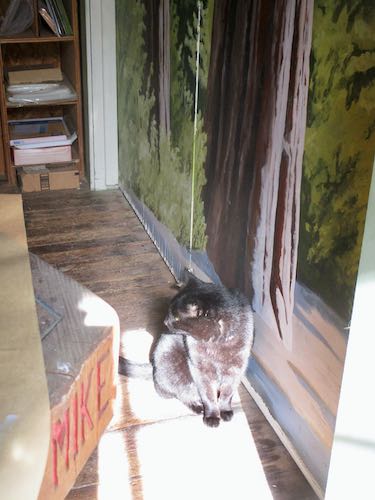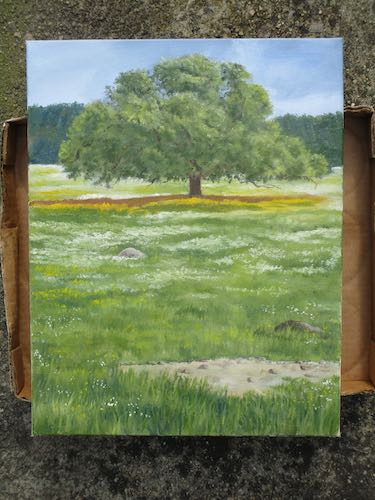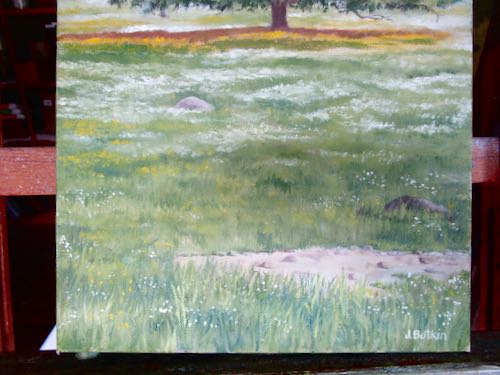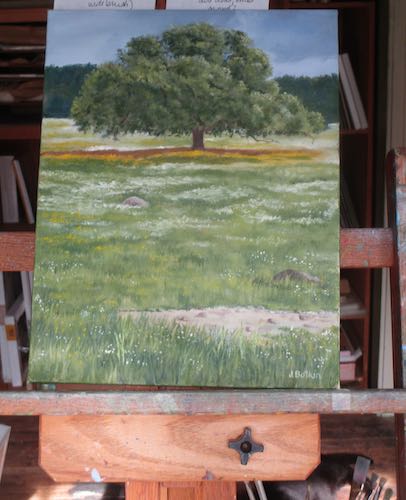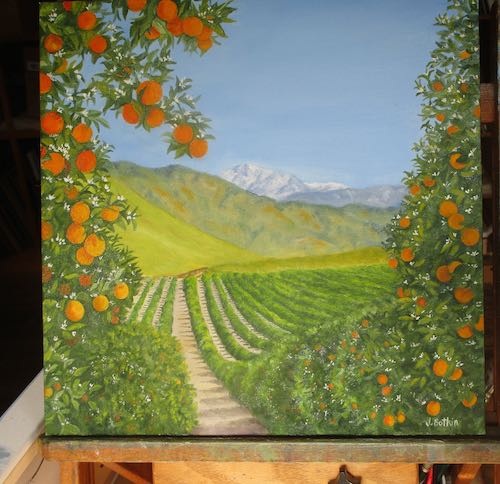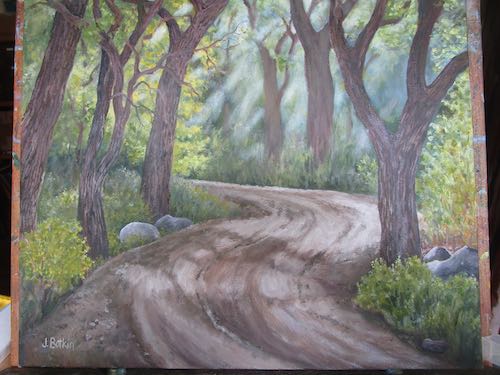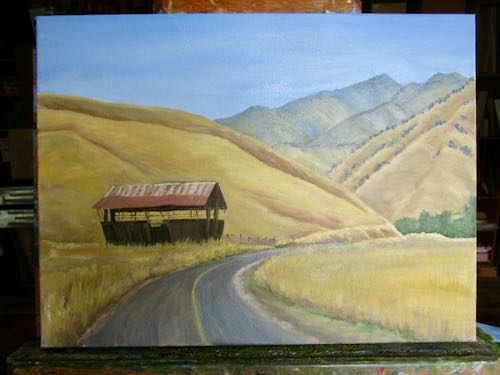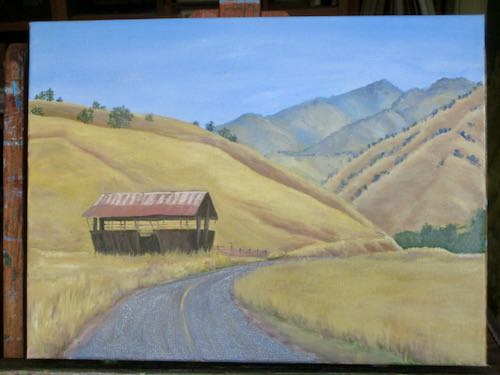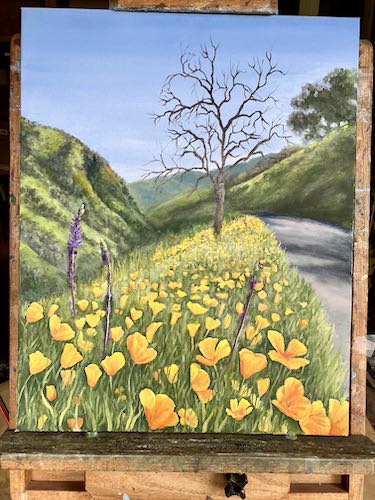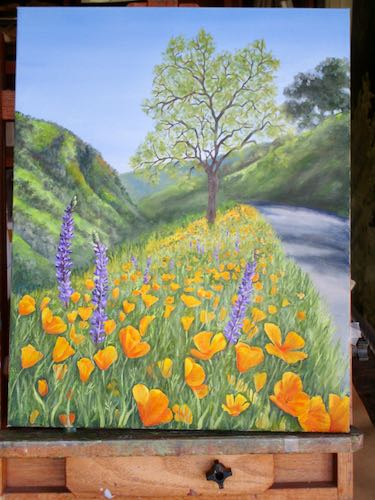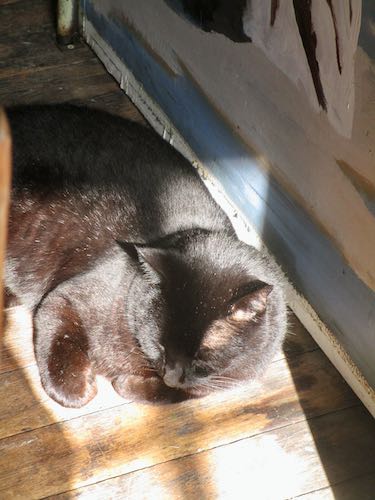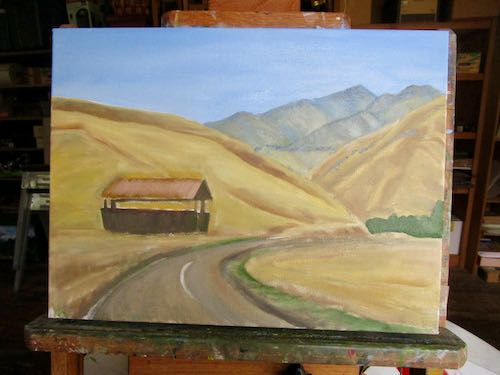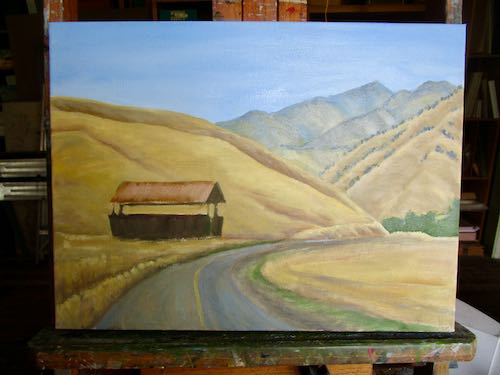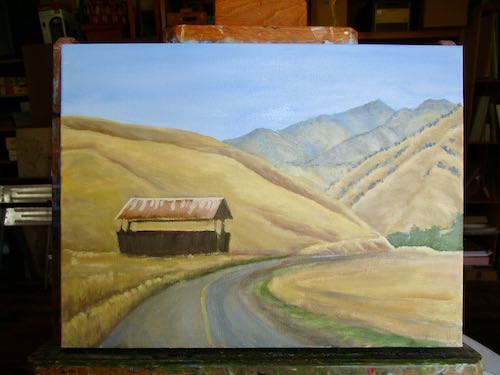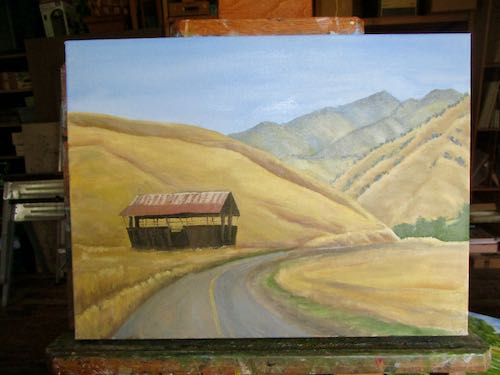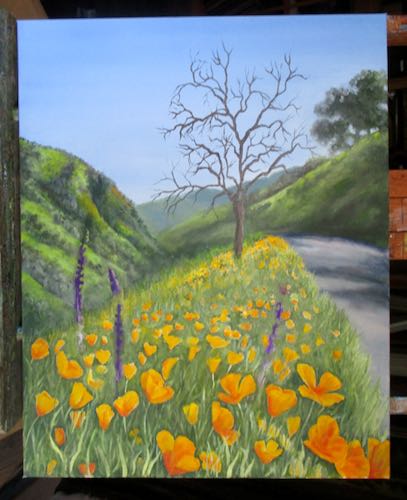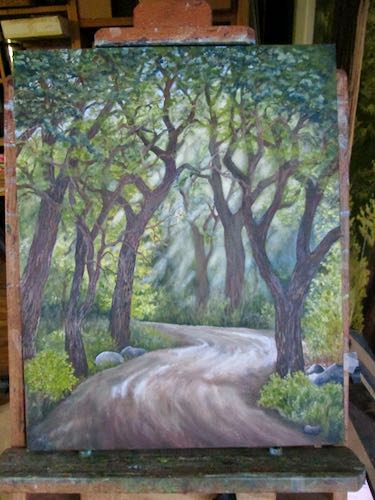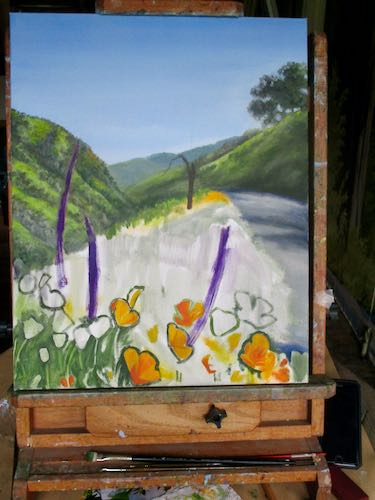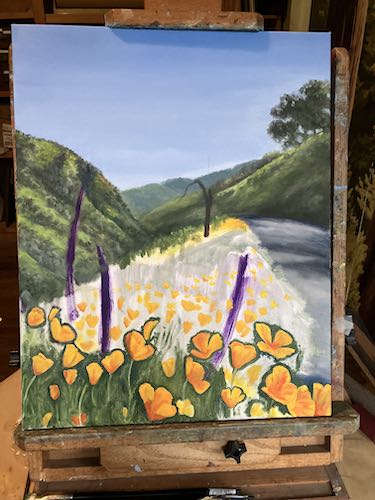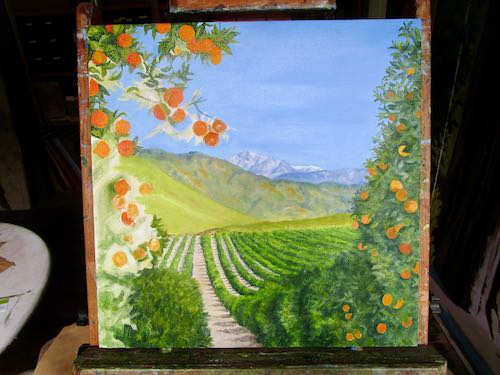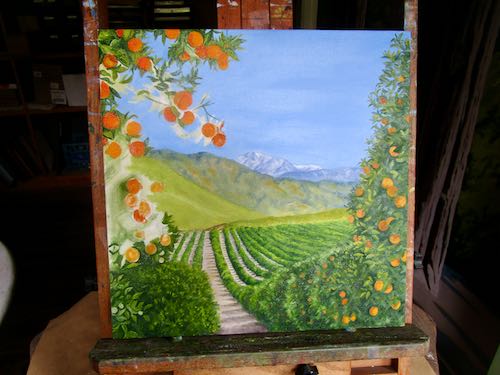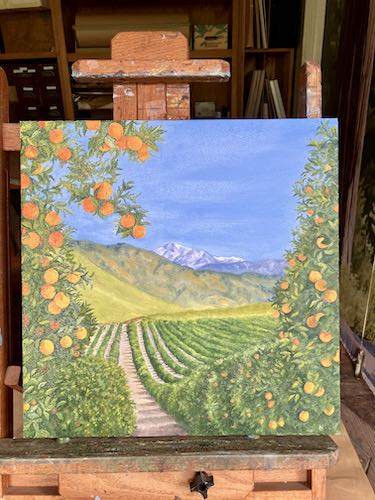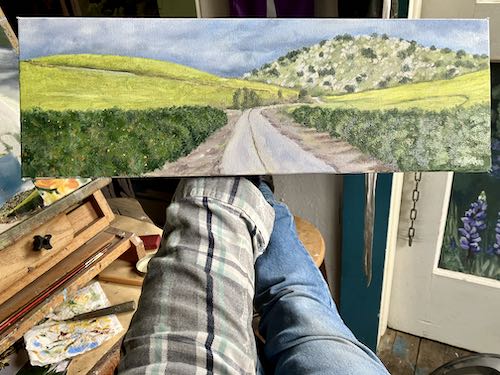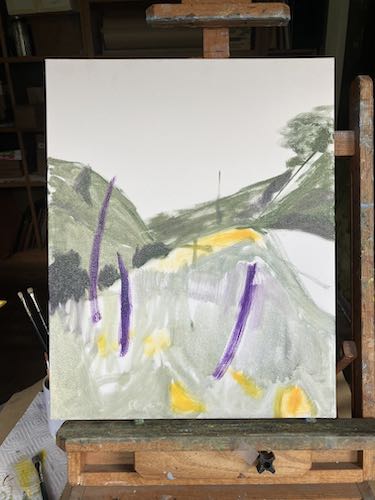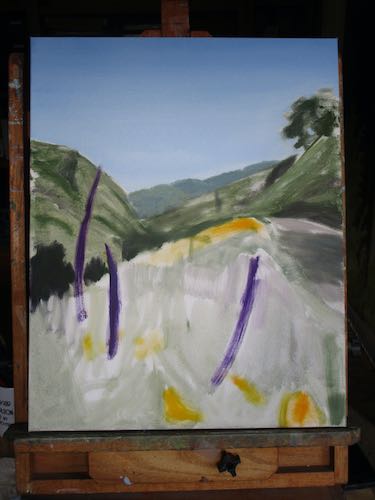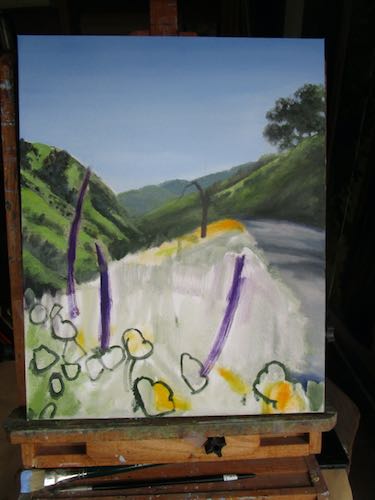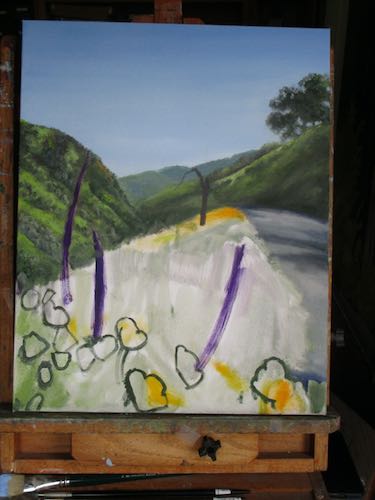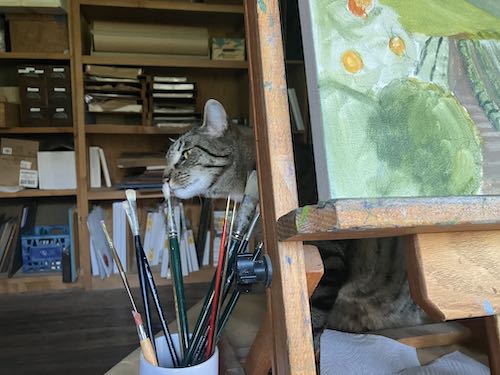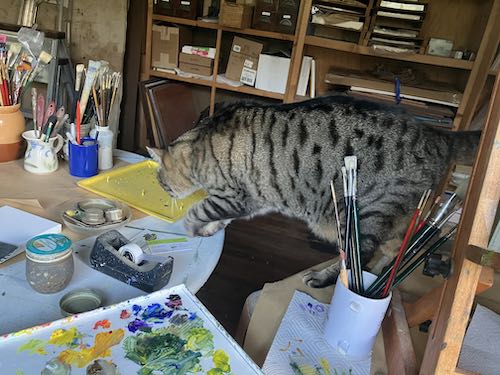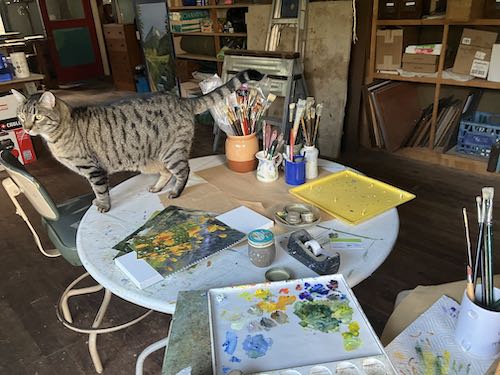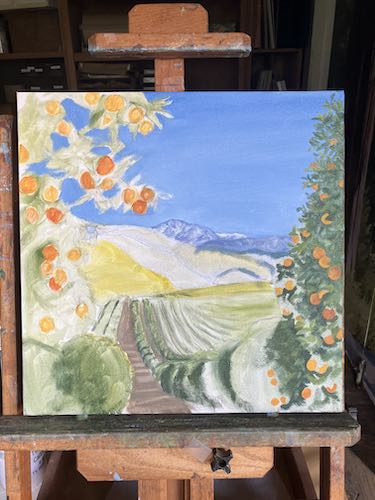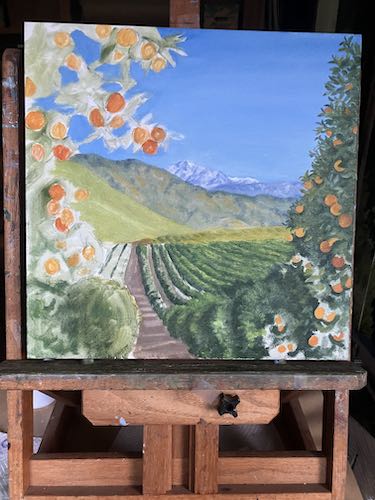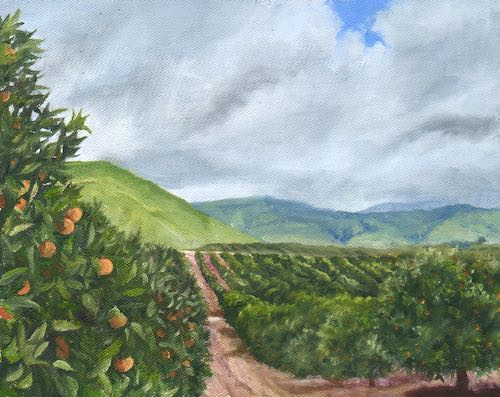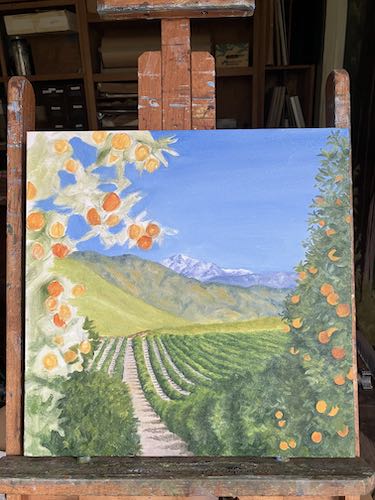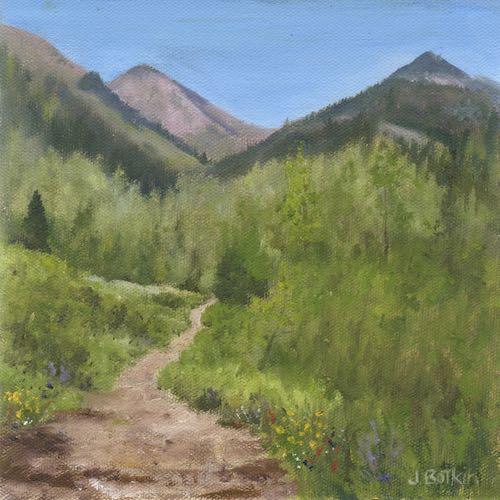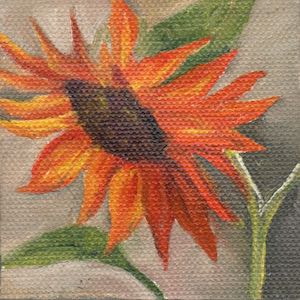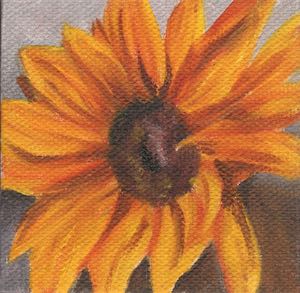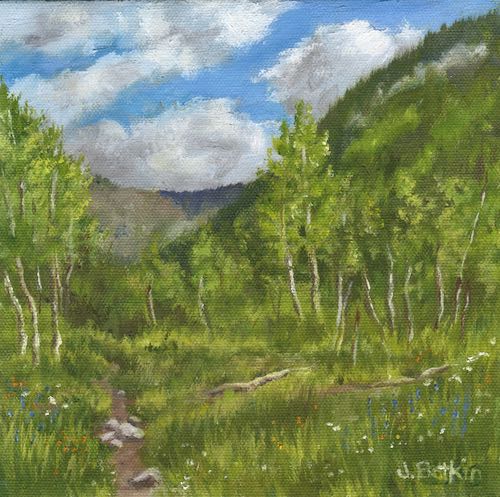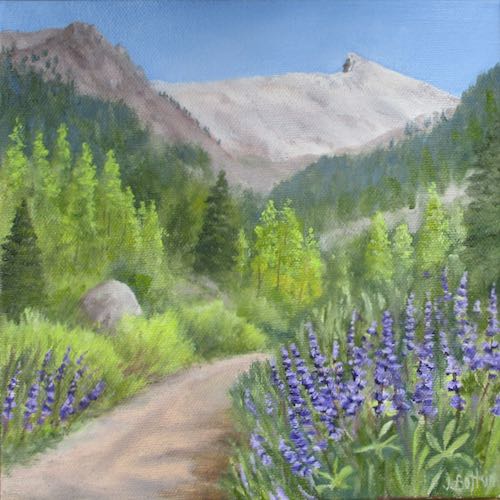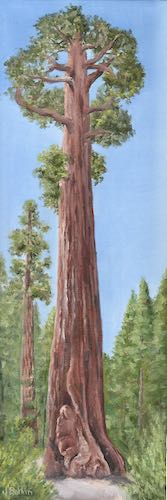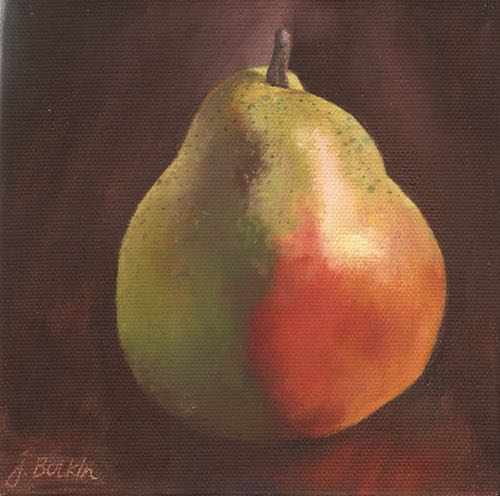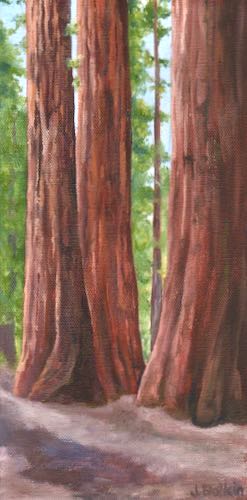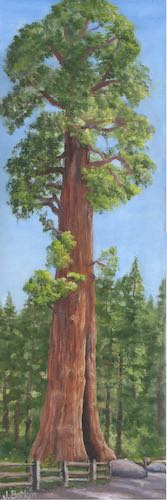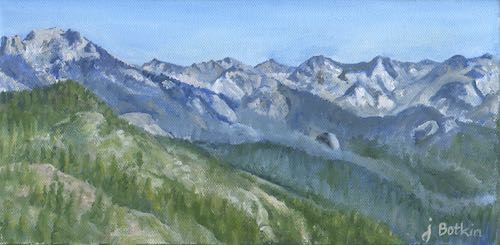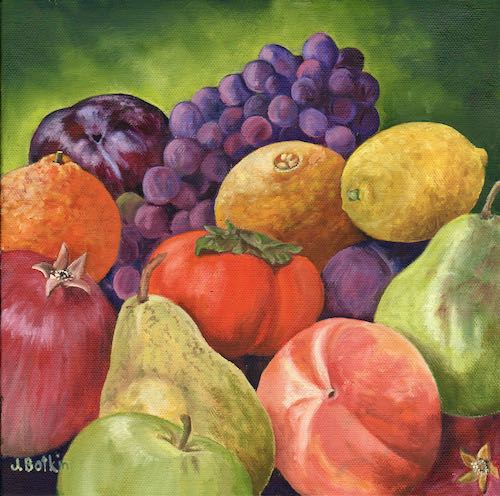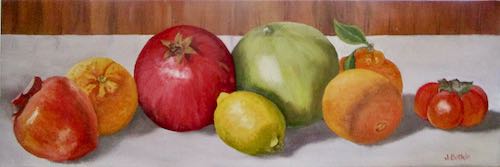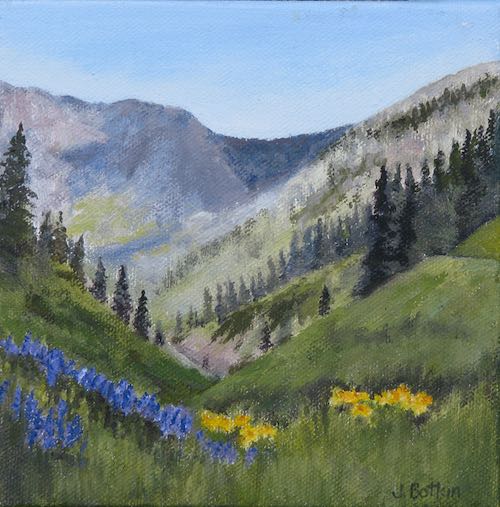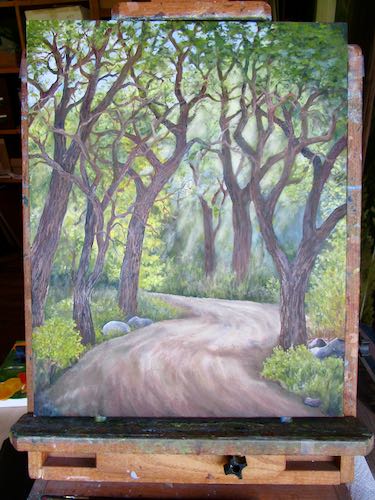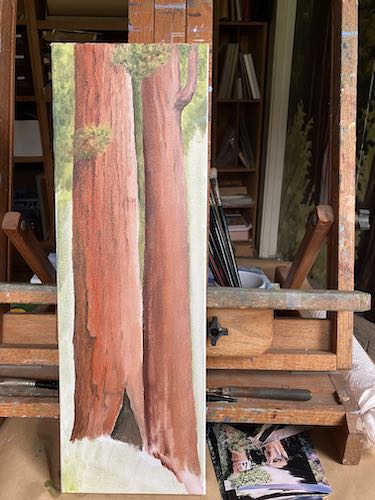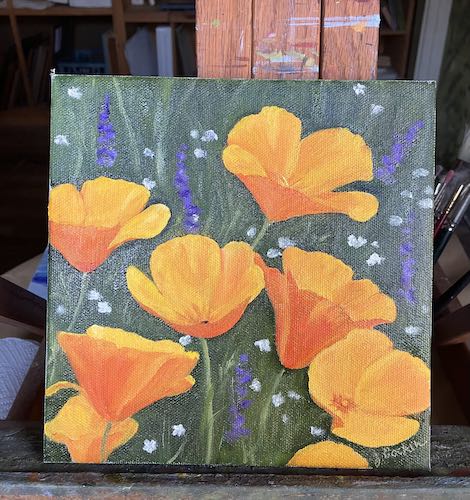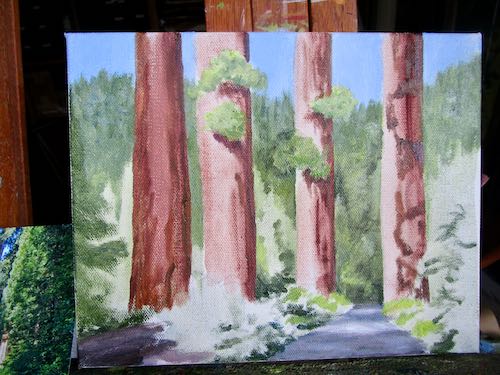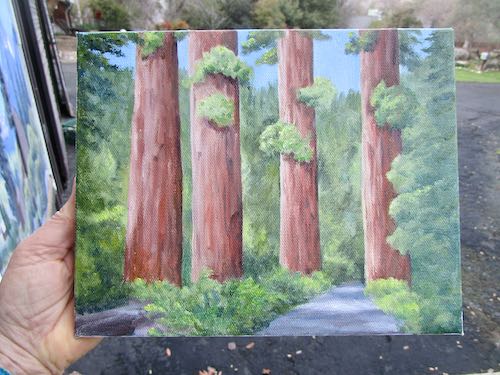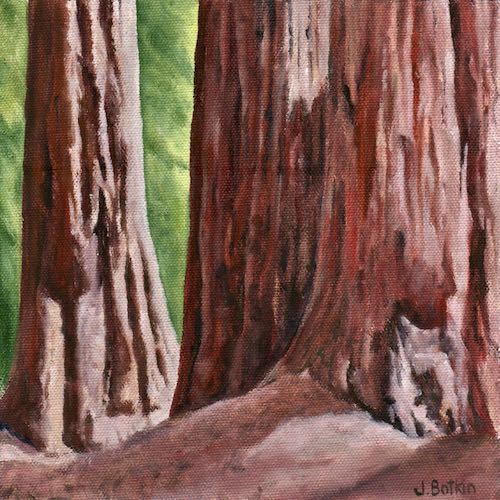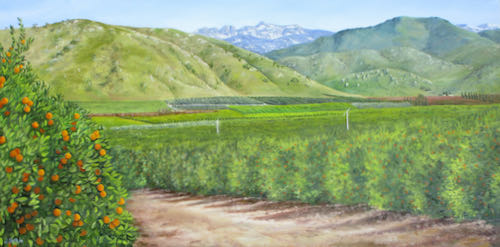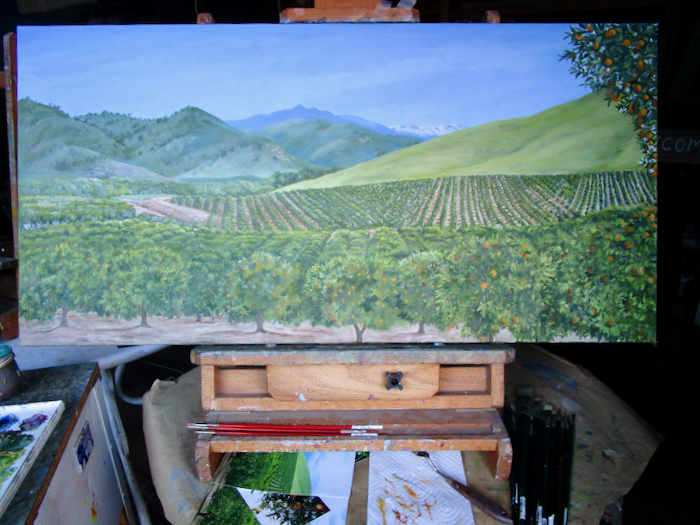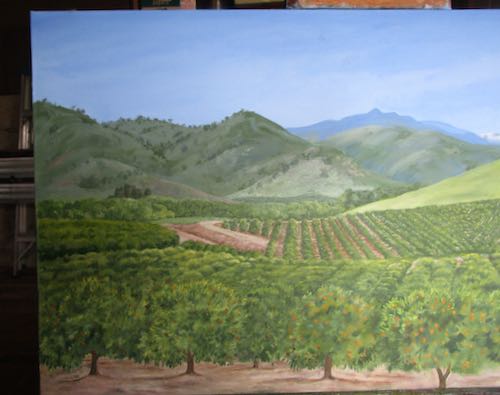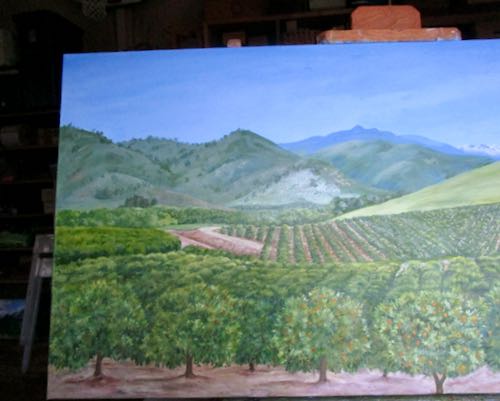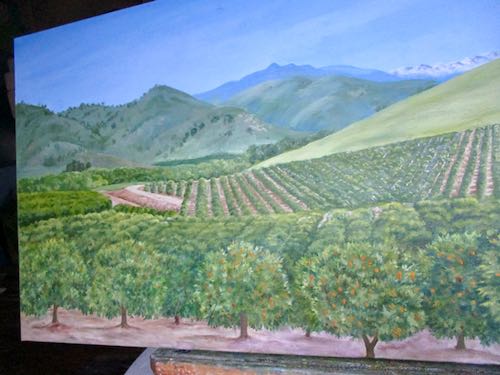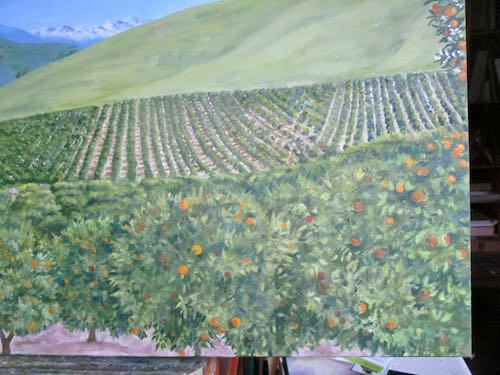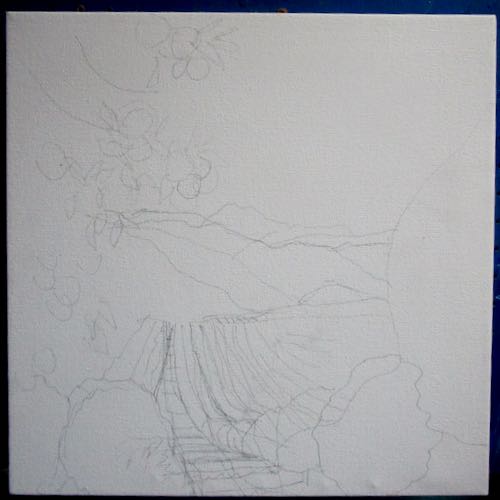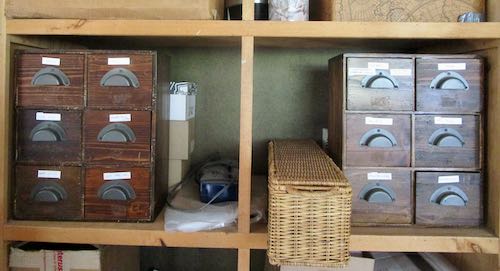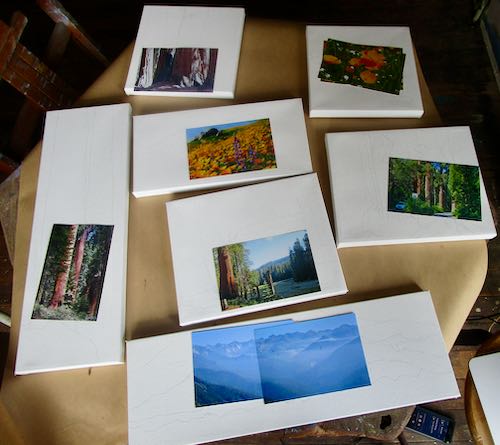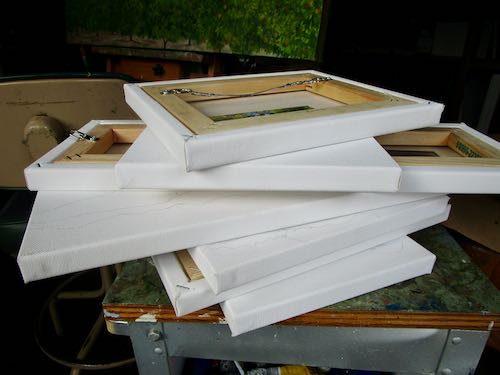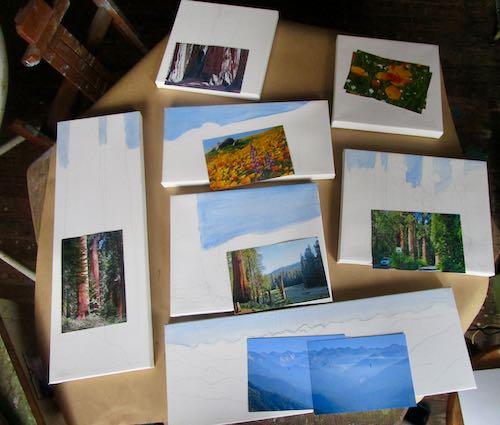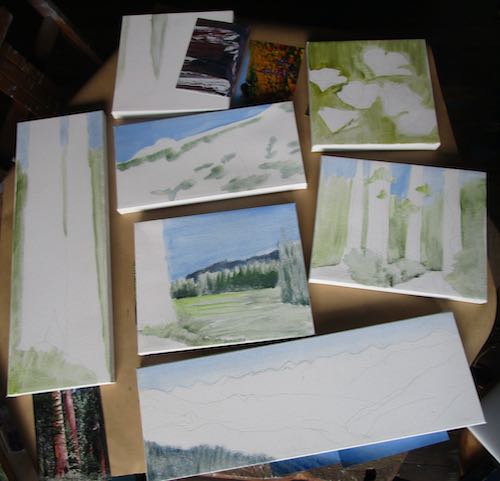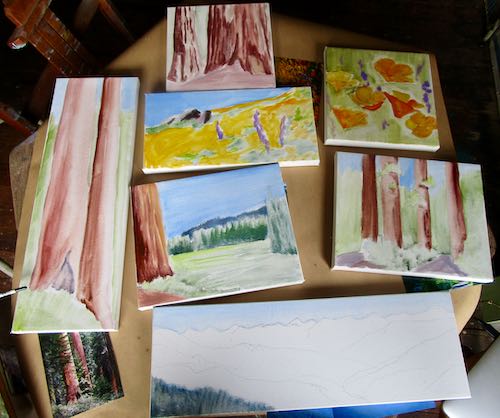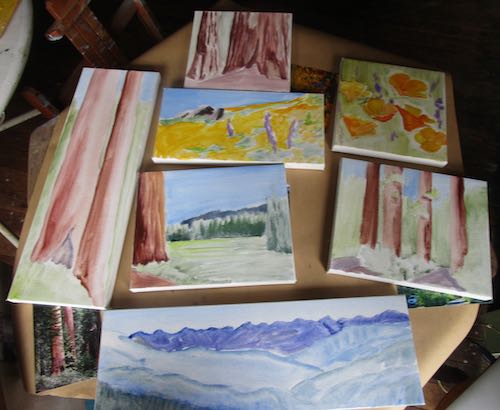This day’s oil painting session went from an olive grove to a walnut grove. (Grove or orchard? Same thing.) The day ended with a potential cattle ranch.
The last olive grove painting session left me with this mess to tackle, layer by layer.
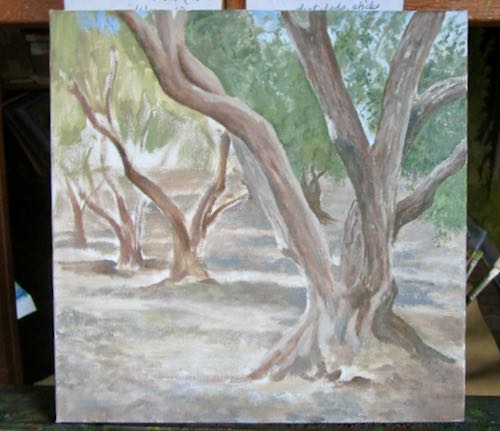
I began with improving the trunks and branches. Here you can see one of the main reference photos.
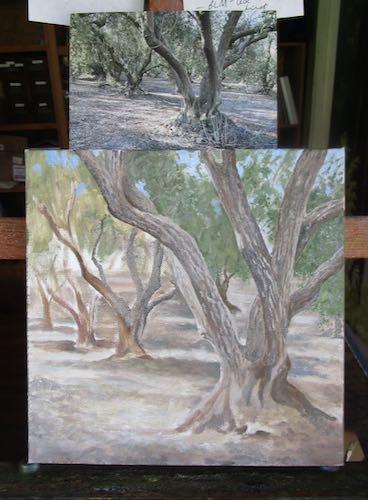
Next I put in leafy texture.
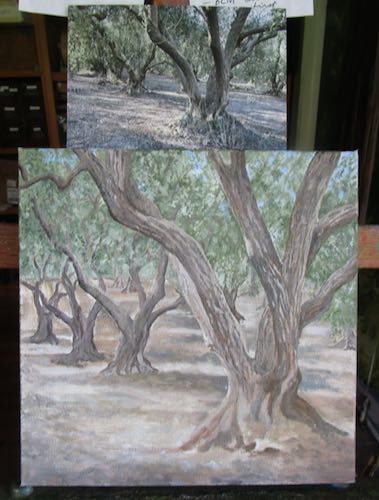
The front gnarly trunk needed detailing, and now it needs to dry. After it dries, I will fix anything that is looking wrong, and then, if the paint is flowing well, if the force is with my brushes, and if I become one with the canvas, I hope to put in some close branches where you can see leaves and olives.
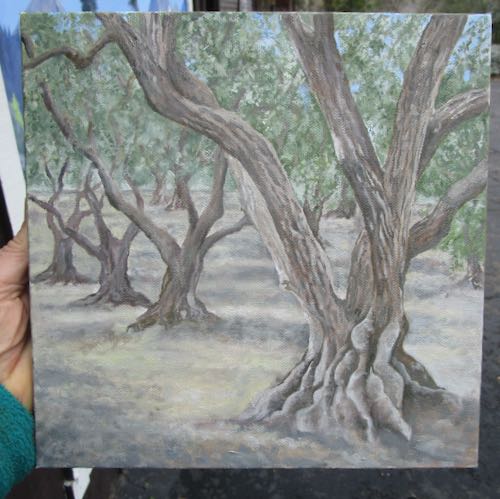
Time to visit a walnut grove. Clearly, this is a walnut grove, no?
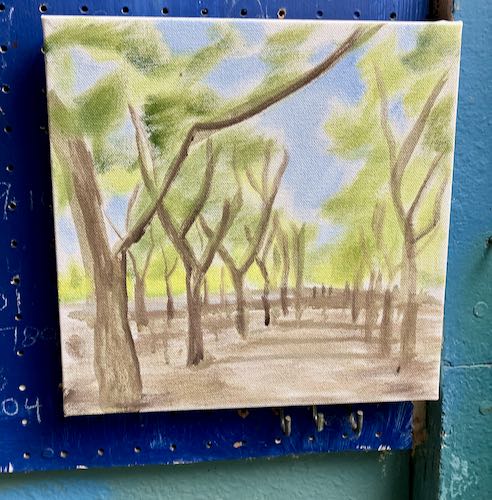
No. It is not clearly a walnut grove. All the lined up trees seemed difficult (read “impossible”). I started with the closer trees.
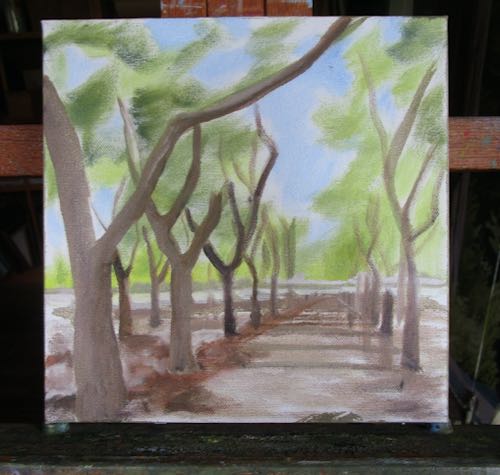
Here you can see the main reference photo. It was a little tricky to condense a rectangle into a square and do it believably. I don’t feel the need to put in every tree. I do feel the need to have the trees line up in their rows. (How do farmers plant their orchards so perfectly?)
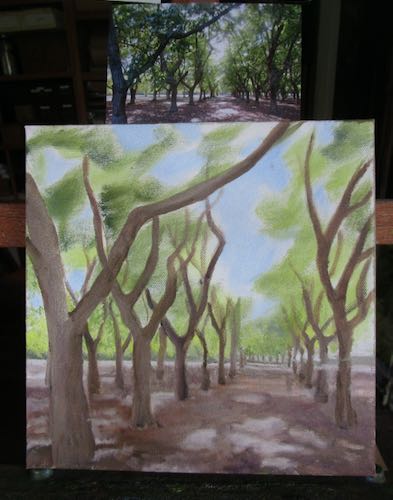
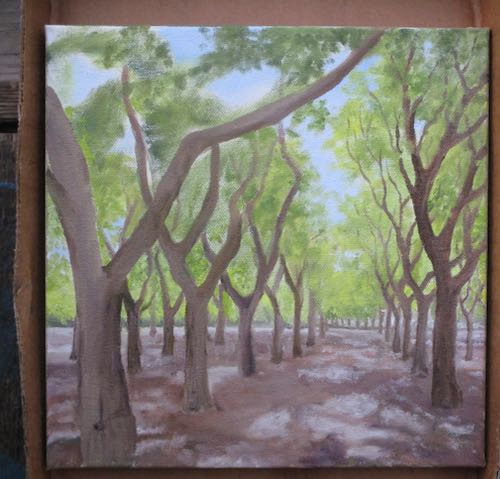
I got tired of brown, so I moved to the distant horizon line and put in the sunlit green in the distance, and then patches of sunlight on the ground. It isn’t as close to finished as the olive grove painting, but I ran out of daylight and the cats wanted to reclaim the workshop as their cafeteria and dorm.
But first, I erased the center line on the road of this painting. There was a bit of a pickle here: I want cows, but that means a fence, and without a real photo of a fence in this position, it is too risky in terms of believability. I could do it if it meant saving all the women and children, but this doesn’t come anywhere near that sense of desperation. So, I messed up the center line and the asphalt, and when it dries, I will try to make it look like dirt or gravel, which means the cows won’t need a fence.
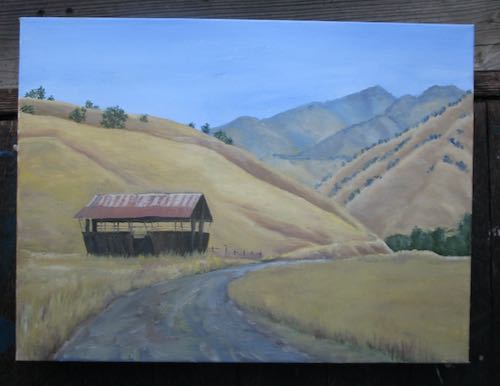
It was really getting dark out. I was cold, tired of difficult decisions, and the cats wanted dinner, so that was the end of my day of farming with a paintbrush in the groves, orchards and ranches of Tulare County.
